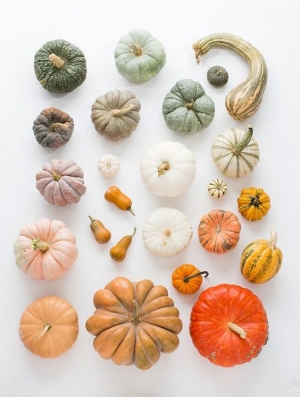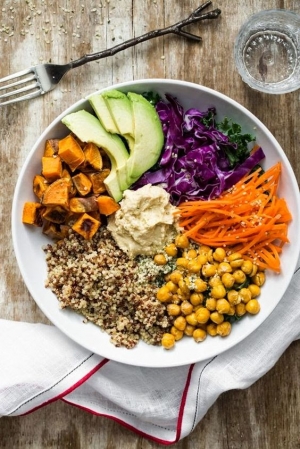
Displaying items by tag: delicious
Pumpkin Power!
Pumpkin is a powerhouse of mental health nutrients. It is also one of the most versatile vegetables that can be served many different ways. Pumpkin bread, pumpkin ravioli, pumpkin smoothies, pumpkin pie, pumpkin soup, pumpkin risotto, pumpkin beer….there are so many ways to fix pumpkin! Pumpkin is widely available all winter and is very inexpensive. Pumpkins are also easy and fun to grow!
What’s so good about it?
- Fiber
Pumpkin is high in fiber, which not only aids in digestion, it acts as a prebiotic for healthy gut bacteria. As we learn more about the important connection between gut bacteria and mental health, the more we know how critical it is to have good gut health. Probiotics are beneficial bacteria that strengthen our immune systems and even regulate our moods. Probiotics need fiber in the gut to colonize and flourish. A cup of pumpkin has 3 grams of fiber and only 49 calories. Adding pumpkin to a meal will help you feel full longer.
- Potassium
Pumpkin is a great source of potassium. A cup of pumpkin has about 500 mg of potassium – more than the boastful banana! Potassium is a critical electrolyte that contains a positive electrical charge and works closely with chloride in regulating blood pressure and PH balance. Potassium is necessary for the heart, kidneys, and other organs to work properly. Potassium allows our muscles to move, our nerves to fire, and our kidneys to filter blood. The right balance of potassium literally allows the heart to beat.
Low potassium levels have been associated with greater risk for mood disturbances and depression. Potassium deficiency can cause irritability, fatigue, muscle weakness, cramps, Restless Leg Syndrome, and chronic pain. Depression and pain are intimately intertwined. People with chronic pain have three times the average risk of developing psychiatric symptoms – usually mood or anxiety disorders.
Potassium also helps regulate serotonin, the neurotransmitter that is primarily targeted by antidepressants. Potassium acts as a facilitator in the brain’s ability to utilize serotonin. Potassium’s positive electrical charge is necessary to spark neurotransmitters like serotonin to make us feel better. Even a slight decrease in potassium levels can trigger significant feelings of anxiety. “When levels of serotonin are high, you’re in a better mood, sleep better, and have a higher pain tolerance,” says Elizabeth Somer, MA, RD, author of numerous nutrition books, including her latest, Eat Your Way to Happiness.
- Amino acids
Pumpkin is a good source of the amino acids tryptophan, phenylalanine, and tyrosine, all of which are associated with mood-regulating neurotransmitters. Tryptophan converts to serotonin in the brain. While antidepressants attempt to make serotonin more available, tryptophan is the only substance that can make serotonin. Pumpkin seeds are especially high in tryptophan and can be roasted for a delicious snack.
Pumpkin seeds are also high in magnesium. Just half a cup of toasted pumpkin seeds has 92 percent of your daily value of magnesium. Magnesium is nature’s relaxer. Most Americans are deficient in magnesium. Magnesium has long been used to calm nerves and to relax muscles. Its therapeutic role in both depression and anxiety is well documented.
- Omega-3 and Omega-6 fatty acids
Omega-3 and Omega-6 fatty acids play a very important role in the management of inflammation. Inflammation has been linked to depression and anxiety as well as many other modern diseases and disorders.
Omega-3 fatty acids are anti-inflammatories. They are extremely important for many aspects of health, including mental health.
Omega-6 fatty acids are inflammatory. In other words, they cause inflammation. We need inflammation sometimes. When we have a wound, we need inflammation to protect the wound and promote healing.
Many people are experiencing chronic inflammation, which is detrimental to our physical and mental health. Diseases of chronic inflammation are more prevalent in societies that eat a Western Diet. This is likely due to the high amount of processed food, junk food, and fast food that is full of omega-6 fatty acids from vegetable oils. Oils like soy oil, corn oil, and canola oil are very high in omega-6 fatty acids and very low in omega-3 fatty acids.
The proper ratio of omega-3s to omega-6s is critical for maintaining an inflammation balance. The ideal ratio is 1:1 to as high as 1:4. The Western Diet has a ratio of omega-3s to omega-6s that typically ranges from 1:25 to 1:50! It’s no wonder we suffer from chronic inflammation.
Increasing the omega-3s in our diet while decreasing omega-6s can decrease our risk of depression and anxiety. Many of the foods we eat commonly are high in omega-6s compared to omega-3s. Pumpkin is one of the relative few foods that have the perfect balance of omega-3s to omega-6s in a ratio of 1:1!
How to eat pumpkin
Pumpkin can be baked, boiled, roasted or pureed. It can be made into soups, smoothies, desserts, and casseroles. There are countless recipes online for the myriad ways to eat pumpkin. Pumpkin can also be substituted in almost any recipe calling for other types of winter squash. And don’t forget about the seeds, which can be eaten raw or roasted.
Here is my recipe for Pumpkin Overnight Oats. This recipe is full of mental health nutrients like tryptophan and omega-3s. It’s super easy, healthy, and a great way to start your day with pumpkin!

Pumpkin Overnight Oats
¼ cup regular rolled oats
¼ cup milk, almond milk, or coconut milk
¼ cup Greek yogurt (plain or vanilla)
¼ cup canned or pureed pumpkin
1 Tablespoon chia seeds
1-2 teaspoons maple syrup to taste
¼ teaspoon pumpkin pie spice (recipe below)
Mix together all ingredients or place in a jar and shake until well blended. Leave in the refrigerator overnight and enjoy in the morning garnished with pecans.
Pumpkin Pie Spice
Mix 2 teaspoons cinnamon, 1 teaspoon ginger, and ½ teaspoon cloves until blended. Store in an airtight container.
Thanks for the article Angela Dailey https://mentalhealthfood.net/pumpkin-power/
The 5 components that make every meal gut-healing
By Robyn Youkilis 28 February 2018
I created my Good Gut Rule of Five to show you exactly what to put on your plate at lunch and dinner. Eating in this way will ensure that you are getting a balance of both macro- and micronutrients, as well as my favorite gut-healing superfoods (which I talk about more in my book, Thin From Within). Aim to include one ingredient from each of the five categories that follow for a complete and balanced meal:
1. Greens:
Kale, collards, arugula, spinach, lettuce...I love ’em all. Aim to have at least two or three big handfuls of greens with most meals. Greens do it all when it comes to gut health and weight loss: They are packed with fiber, which helps fill you up and keep you regular. Plus, leafy green veggies are some of the most nutrient-dense foods, and when you are filling your cells with nutrients (I mean real nutrition, not just calories!), you have more energy and fewer cravings.
2. Healthy fat:
Avocado, olive and flax oils, almonds, butter from grass-fed cows (so the cows have healthy guts too!), and coconut oil all count here. Add 1 to 2 tablespoons of oil, 1 to 2 ounces of nuts, or ¼ to ½ of an avocado at each meal for a good dose of flavor and satiation. Plus, fats are essential for proper absorption of most vitamins and minerals. I used to be terrified of fats, but now I include them at every meal and am lighter than I’ve ever been.
3. Protein:
Wild salmon, grass-fed beef, organic chicken, tempeh, sprouted lentils, and canned wild sardines are some examples of great go-to protein options. Protein keeps you full and stabilizes your blood sugar, so you won’t keep dipping into your raw chocolate stash or crash halfway through your afternoon meetings.
4. Fermented food:
Including fermented foods on your plate is the good-gut secret to weight loss through a healthy microbiome (you need all that great bacteria throughout the day to keep your digestion humming!). Examples include raw sauerkraut, fermented beets, fermented carrots or radishes, and kimchi. Try adding 1 to 3 tablespoons at each meal, and feel free to work your way up to ½ cup or more. If you’re not used to the flavor of fermented veggies, try mixing them with avocado to mellow the flavor.
5. Cooked vegetables:
Having a cooked veggie or two with my meal (in addition to greens) always makes the meal feel more grounding and filling. Roasted zucchini, broccoli, sweet potatoes, squash, and carrots are all examples of delicious cooked veggies, but this can really be any veggie. I try to roast a bunch of seasonal veggies at least once or twice per week so I always have some cooked veggies on hand and ready to go. If you’re on the run, many takeout spots and fancy restaurants have awesome veggie choices these days.
Contact Leonie Main
m: +64 (0) 274 96 96 33
19B Golf Road, Mount Maunganui 3116, New Zealand
Facebook: Gypset Life




